


Guide to Reverberation Control
The guide is aimed at developers and architects and sets out common reverberation control treatment options for rooms.
These treatments are used to prevent excessive reverberation and are often required to achieve acoustic specifications or regulations. In particular, reverberation treatments are required for the following development types:
• corridors in residential developments to comply with Building Regulations Part E
• teaching rooms in schools to comply with BB93 (as required by Building Regulations Part E)
• rooms within medical or healthcare facilities to comply with HTM08-01
• office workspaces (particularly open-plan workspaces) to achieve good quality work environments
The amount and type of treatment will vary depending on the size and use of the room. In many cases, the location of the material is also very important.
The performance of acoustic treatments is graded based on the amount of sound they absorb. The best absorbers are Class A (almost total absorption), however, Class B & C absorbers are also very effective.
Set out below are a number of common treatments along with their pros and cons.

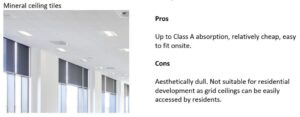
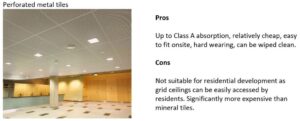
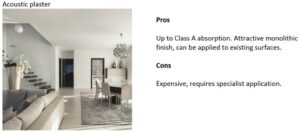
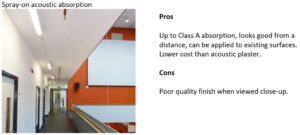

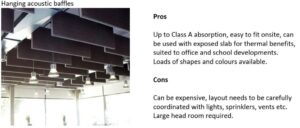
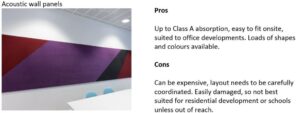
Other treatments

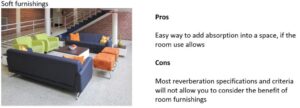
As shown above, there are various treatment types, many of which also come in different styles and configurations. The key is finding the right treatment (or combination of treatments) for every project. Cass Allen has extensive experience in the design and specification of reverberation treatments including numerous products and suppliers. Please let us know if you would like more information.








